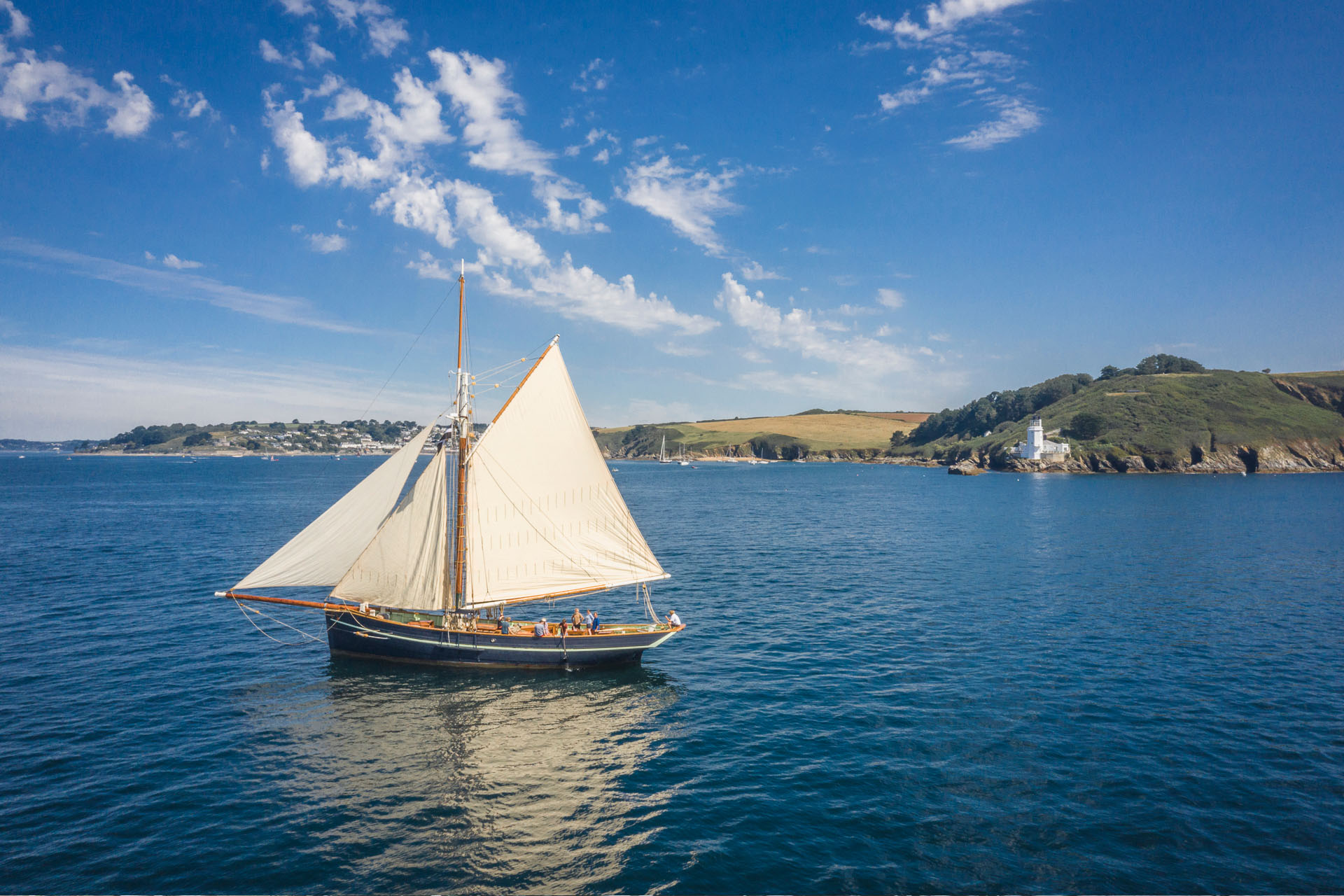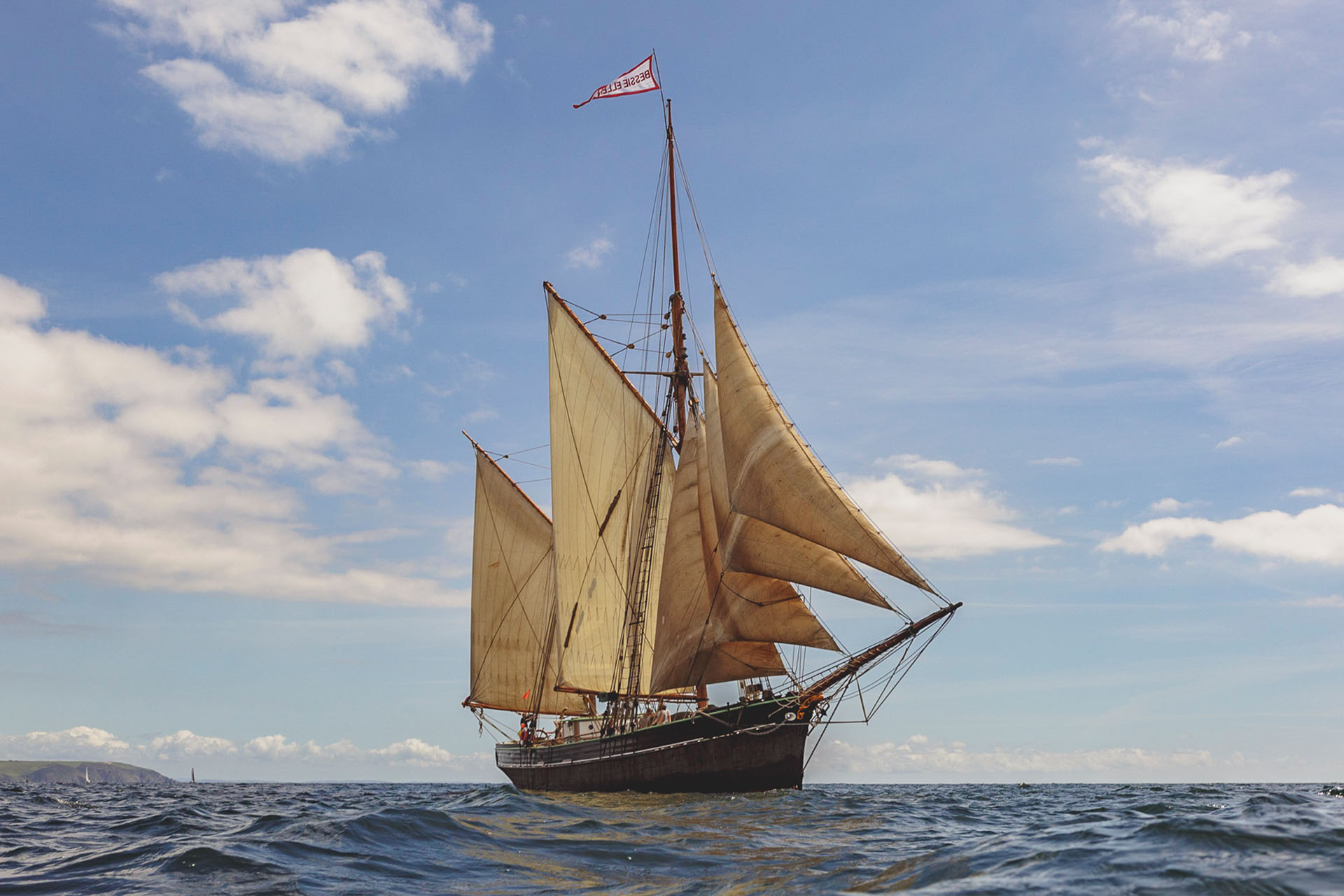
The history of the West Country trading ketch is rather unromantic. There’s no sailing into the sunset or walking the plank here – but that doesn’t make their legacy any less important. West Country trading ketches were the lorries and trucks of their day. Between the mid-19th and early 20th centuries, they carried tonnes of essential cargo like china clay, slate, and coal around the southwest. Usually, they were small, family-run enterprises operating out of ports such as Bideford, Fowey, and Appledore. West Country trading ketches were complete workhorses. The constant repair and maintenance needed to keep them afloat often meant an ecosystem of chandlers, boatbuilders, merchants, and sailmakers would thrive around small harbours.
What is a West Country Trading Ketch?
A West Country trading ketch is a two-masted vessel typically around 100 feet (approximately 35 metres) in length. It cuts through the water with a sharp bow and a sweeping, rounded stern. The relatively deep keel provides stability in rough seas. At roughly 20ft (6 metres) across at its widest part, with two deck hatches for fast loading and unloading, West Country trading ketches were the perfect balance of spaciousness and speed. They were strong and nimble enough to conquer even the toughest conditions, but with room to transport between 75-150 tonnes of cargo in their hold. Their traditional rigging consisted of two gaff sails, a topsail, and up to four jib sails attached from the bowsprit. This made them easy to handle with a small crew, often made up of family members. Sailing speed varied but in a beam reach with a good breeze, it wasn’t uncommon to hit eight knots, making cargo delivery swift and efficient.
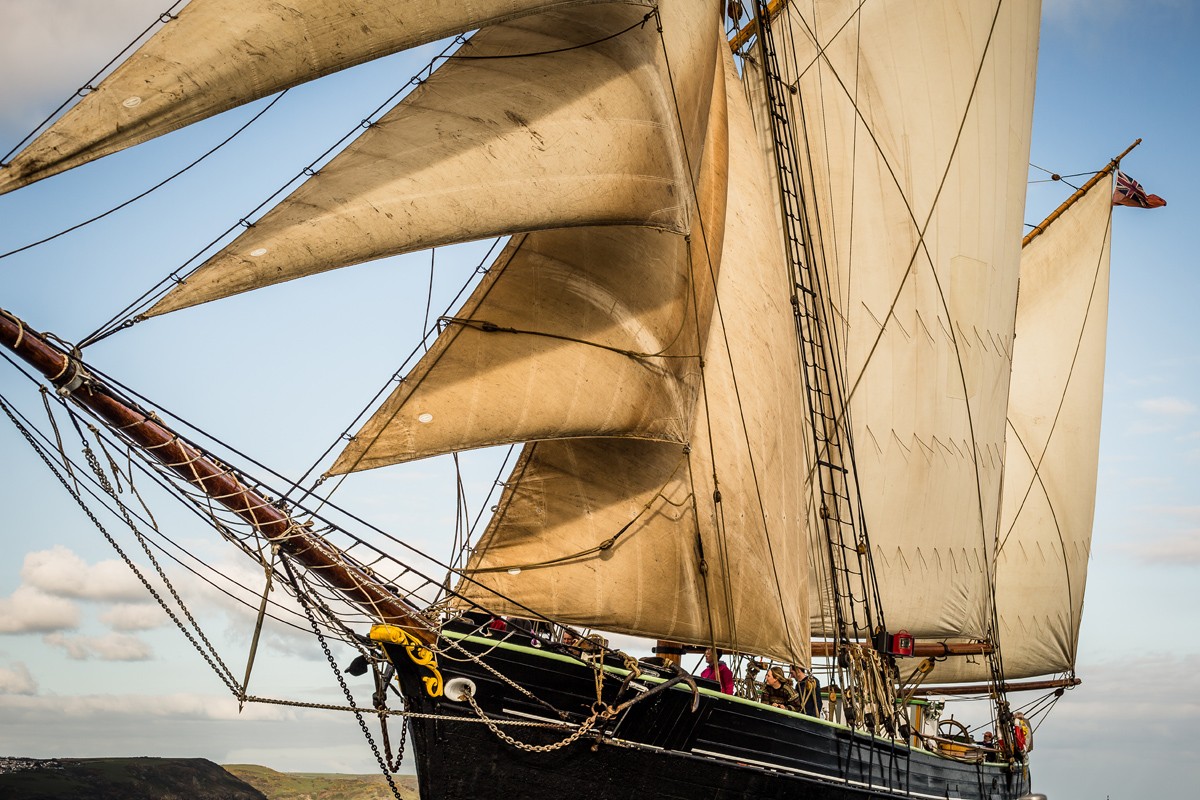
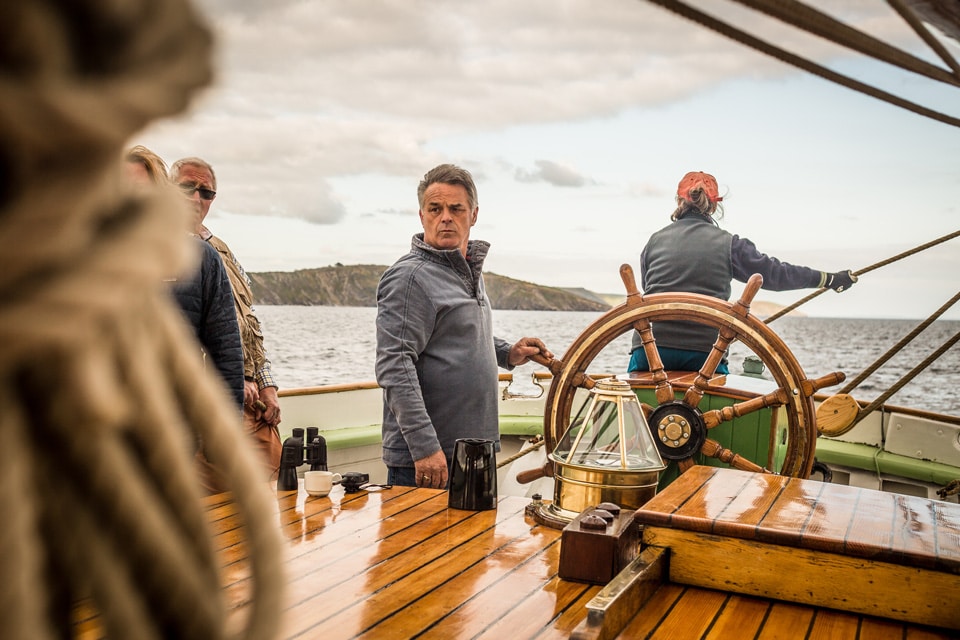
West Country Trading Ketch Design
The design of the West Country trading ketch was essentially as fast as a sail-powered cargo boat could get before diesel engines and steel hulls took over. They were some of the last commercial vessels to be built from wood. Everything from pitch pine, elm, and oak were in use for the construction of the hull – often a mixture, depending on the price of the raw materials. Trennels, or tree nails, usually made of oak (essentially strong wooden dowels, turned on a lathe) would have been used originally to hold the hull together, but in later designs and in refits, these were replaced with metal.
The history of the West Country Trading Ketch
In their heyday, the fleet of these ketches numbered around 700. However, like many other sail-powered boats, the decline of these ships began with the advent of internal combustion engines at the beginning of the 20th century. Although some were still used as late as the 1960s, many West Country trading ketches ended their working lives during the Second World War. During this period they were moored up in various estuaries and used to hold down barrage balloons which protected ports and harbours from enemy aircraft. Sadly, after the war, there was little money to be made by refurbishing these ships for commercial use, and many were left to rot in shipyards, or on the shores of the estuaries themselves.
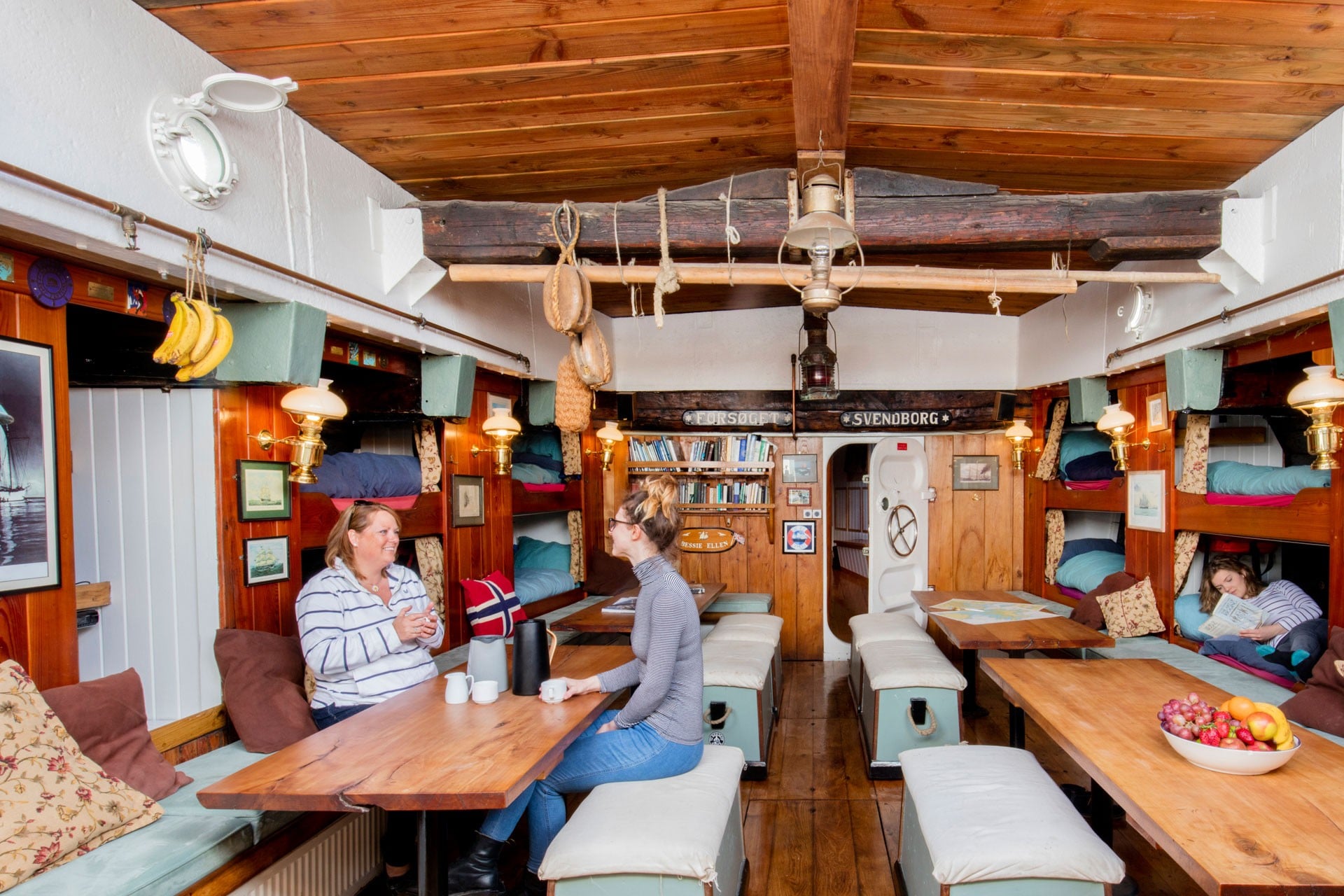
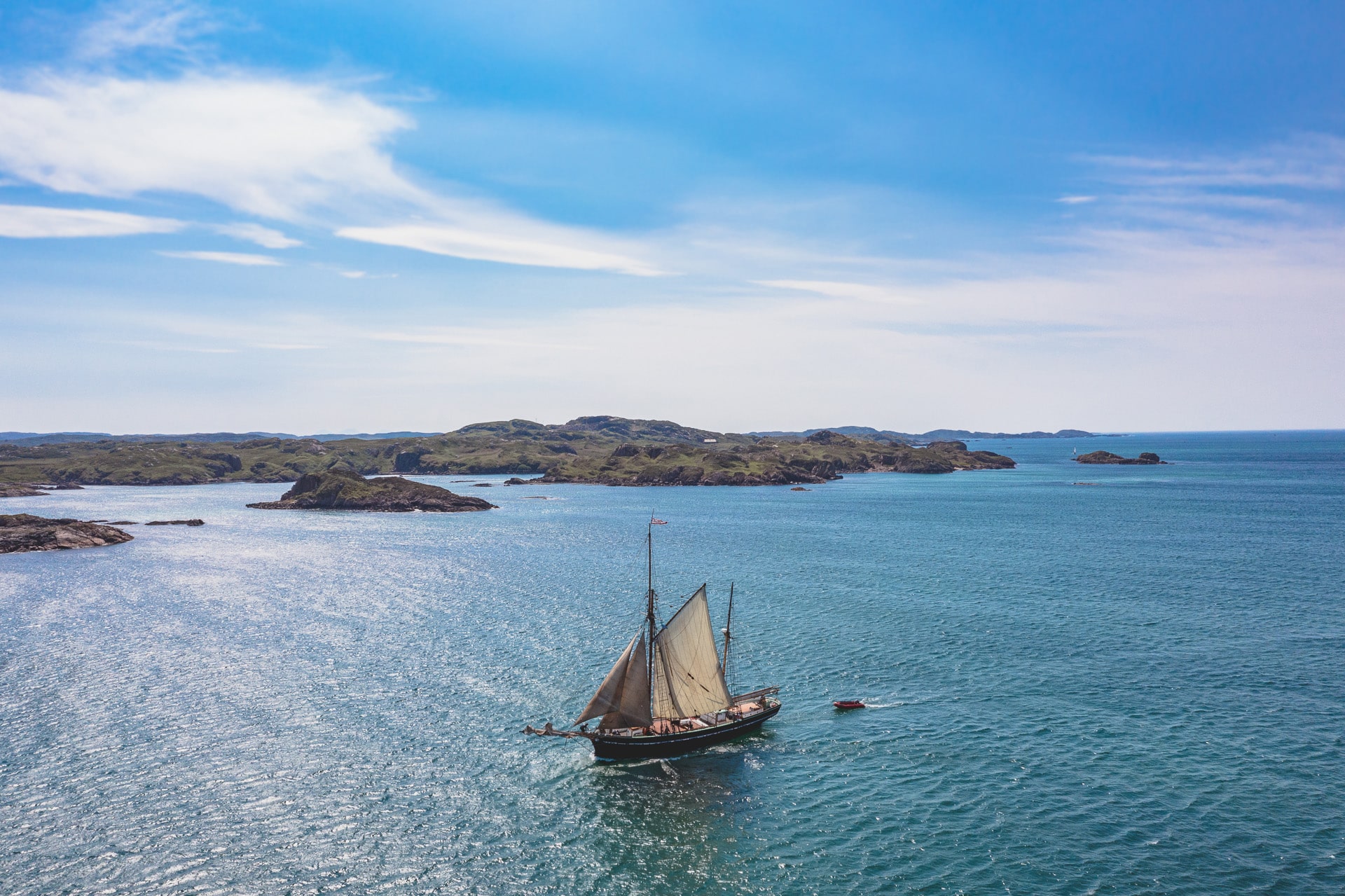
West Country Trading Ketches today
The demise of the fleet of West Country trading ketches means that these vessels are now extraordinarily rare – only three remain in the UK. Venturesail are thrilled to be offering charters on Bessie Ellen, a West Country trading ketch whose history stretches back nearly 120 years. Her working years all began with a cargo of manure on her maiden voyage from Plymouth to Bideford in 1907. Bessie Ellen then worked through both World Wars, and her long history at sea has earned her a place on the National Historic Ships Register. Refurbished by owner and skipper Nikki Alford in the early 2000s, there’s nary a winch in sight and all sail handling is done by hand. Happily, though, the cargo hold has been converted into a comfortable main cabin with private bunks so you can relax after a day hoisting halyards and helming (as well as enjoying the stunning scenery of her sailing destinations).
Step back in time and experience the maritime history of these beautiful vessels for yourself with a voyage on Bessie Ellen.












